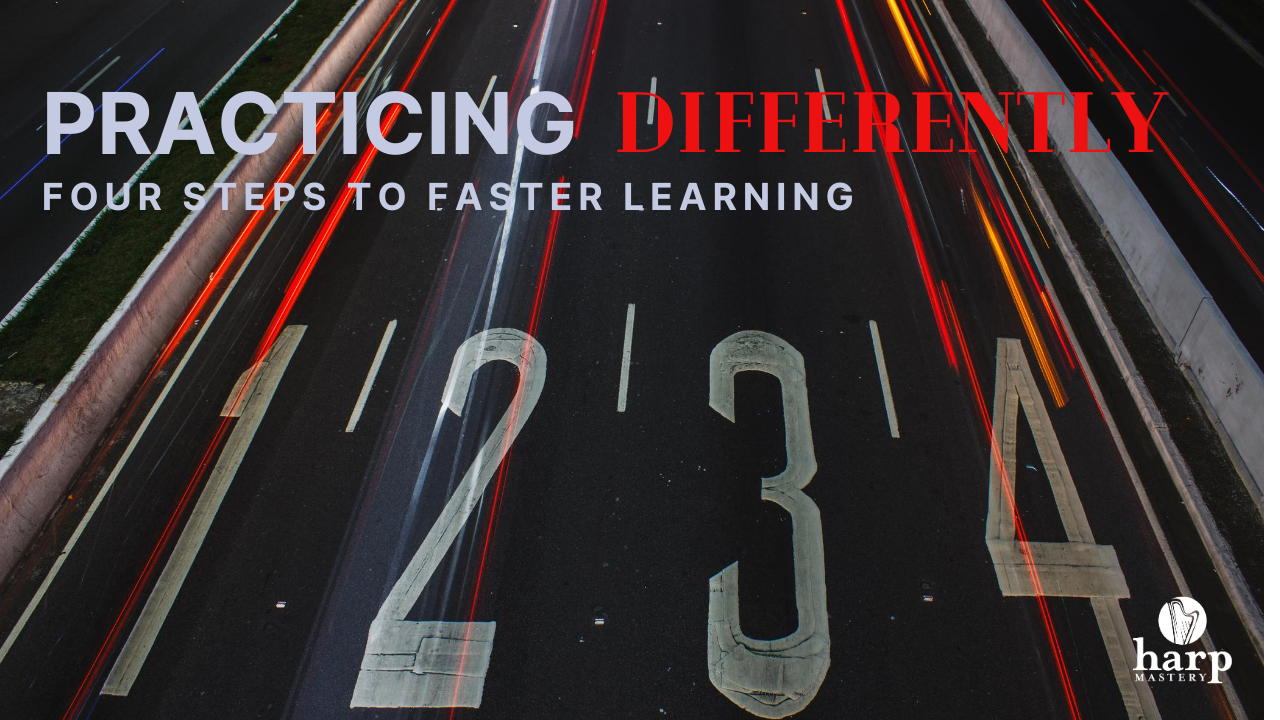Practicing Differently: 4 Steps to Faster Learning

“Think different.” - Apple advertising slogan
We’re becoming accustomed to change. That doesn’t mean that change is any easier to live with. It is simply a condition of the times.
Because we are bombarded by change, we cling more tenaciously to the few constants in our daily lives, particularly in our music, even when they may be detrimental to our sense of fulfillment and accomplishment. There is one area of our music-making, however, where change - the right kind of change - can yield surprising results. It’s the way we practice.
Many of us started music studies as children. We had careful, caring teachers who guided us through the steps we needed to take to develop our technique, our musicianship and most importantly, to learn pieces well and thoroughly. They showed us everything we needed to know - well, almost everything. What your teacher likely didn’t teach you was how to transition from practicing what and how she told you to practicing on your own.
There’s a growth level in music studies, no matter what your age, that is defined by how you practice. When beginners practice, they are learning the first fundamental skills of playing their instrument. They may also be learning to read music for the first time. So the thoughtful teacher helps these students progress slowly so they aren’t overwhelmed. As the student’s technical and musical skills grow, they can move more quickly, only slowing the learning curve when they are learning a technique they haven’t encountered before.
But the transition to a new way of learning and practicing often happens so gradually that the student doesn’t understand or perhaps even recognize the difference. So that when a student begins a new piece without a teacher’s guidance, there is no process to follow other than the very basic early system from when they were first learning.
Consider the striking difference.
A beginning student learns one piece for many weeks, often to prepare it for the teacher’s year end recital. An experienced musician will learn repertoire quickly, usually in a few weeks or less and often with a performance deadline. The beginning student’s practice system simply will not work for learning repertoire quickly. It is also a waste of valuable practice time, as it doesn’t make use of the skills the student has accumulated over the course of their studies.
The plain truth is this: your practice process should be keeping pace with your technical and musical development. To borrow from the title of Marshall Goldsmith's best-selling book about success, “what got you here won’t get you there.” The way you learned pieces in your childhood or in the very beginning stages of your harp journey were appropriate and necessary at that time. But with a different skill and maturity level, you need a different system for learning, one that utilizes what you already have learned about the harp and about learning. In order to step up your progress, you need to step up your process.
Your learning process needs these components: big picture practice, detail work and a way to finish any piece in a defined time frame. Yes, it’s simple, but it covers all the bases and allows you to save time by practicing only what you must. This is the secret behind the success of any busy harpist.
A busy harpist often needs to learn music quickly, by a certain date in the near future. She doesn’t have time to begin work on the piece by taking it all apart. She needs to play it as soon as possible, so she begins by reading through it. At that point she identifies the parts that she absolutely must practice, and practices those parts separately. She puts them back in the context of the piece, and the piece is ready to play.
When I teach this process to my students, I teach it in four steps:
- Get the overview.
- Work in sections.
- Fix the spots.
- Practice playing the piece.
While this feels uncomfortable to some students at first, most students experience a new level of freedom and confidence in their playing as they begin to trust the process and themselves. They realize that they can use the skills they have worked so hard to develop and not struggle to “reinvent the wheel” with each new piece.
If you are ready to embrace this kind of change, a change that will help you play more music and play it with more enjoyment, I urge you to try the “30 Days to Done” course at harpmastery.com. The course has detailed practice plans with specific practice techniques to show you precisely how to take your pieces from start to finish in 4 weeks. If you’ve never tried practicing this way before, you will be amazed at how it revolutionizes not only the way you practice, but also the way you think about and understand music. You can join the course here:
To quote composer Leonard Bernstein, “To achieve great things, two things are needed: a plan and not quite enough time.” I have the plan; do you have the time?
50% Complete
Two Step
Lorem ipsum dolor sit amet, consectetur adipiscing elit, sed do eiusmod tempor incididunt ut labore et dolore magna aliqua.